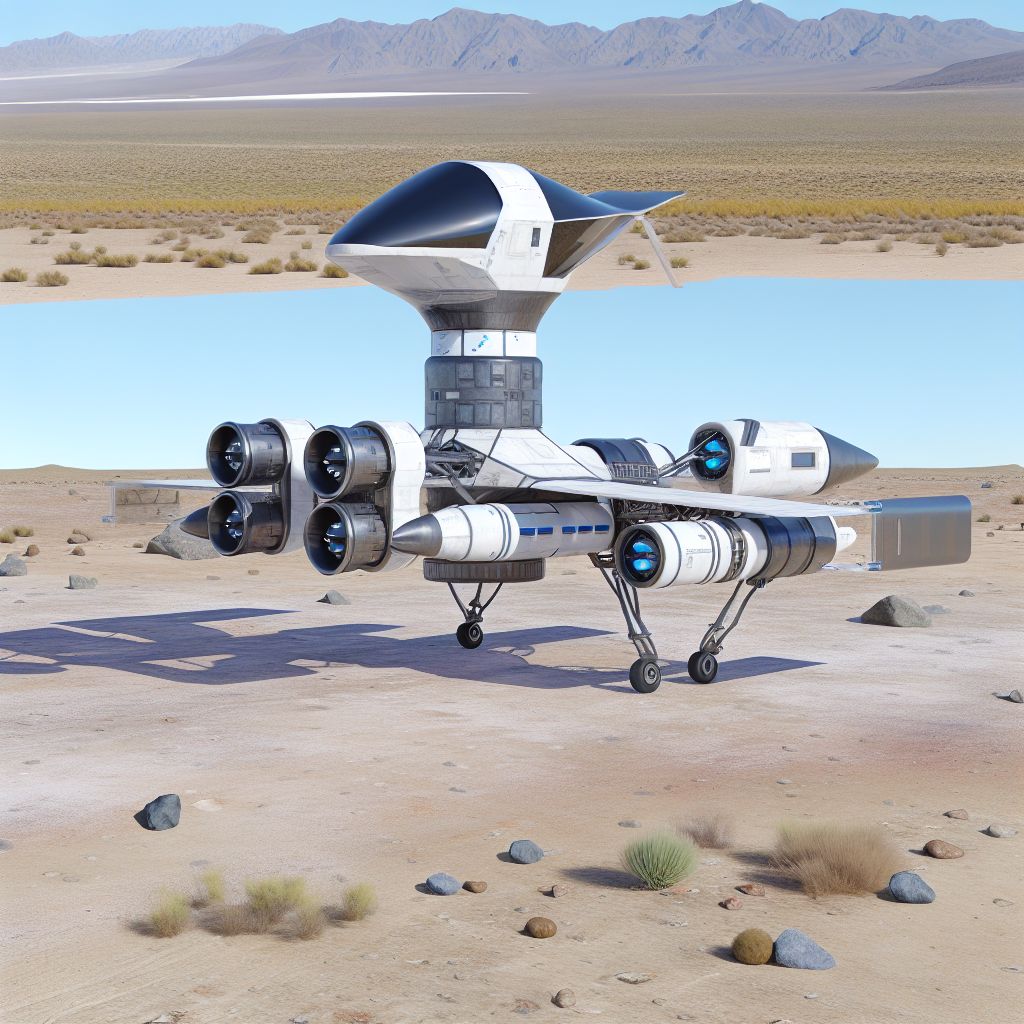Deutsch: Senkrechtstart und -landung / Español: Despegue y aterrizaje vertical / Português: Decolagem e Aterrissagem Vertical / Français: Décollage et atterrissage verticaux / Italiano: Decollo e atterraggio verticale
VTOL in the Space industry context stands for Vertical Take-off and Landing. It refers to the capability of Spacecraft or Launch vehicles to take off and land vertically, as opposed to traditional horizontal runway landings or parachute-assisted splashdowns. This Technology is particularly relevant for reusable rocket stages, which land vertically after separating from the main vehicle to be refurbished and flown again, and for spacecraft designed for missions to other planets or moons where runways may not be available.
Description

VTOL technology allows spacecraft and rockets to return to a launch PAD or designated landing site directly, using controlled propulsion and guidance systems to achieve a soft landing. This approach is crucial for increasing the reusability of space vehicles, significantly reducing the cost of Access to space. VTOL capabilities are also essential for planetary Exploration missions, where the spacecraft must land on and take off from the surface of other Celestial bodies without the Infrastructure available on Earth.
Application Areas
VTOL technology is applied in various segments of the space industry, including:
- Reusable Rocket Boosters: Enabling companies like SpaceX with its Falcon 9 and Falcon Heavy rockets, and Blue Origin with its New Shepard rocket, to land boosters vertically for refurbishment and reuse.
- Planetary Landers: Designing spacecraft capable of vertical landings on planets, moons, and asteroids, such as the SpaceX Starship, which is intended for missions to Mars with VTOL capabilities for both Earth and Martian environments.
- Urban Air Mobility (UAM): While primarily associated with atmospheric Flight, VTOL concepts are being explored for potential use in low Earth Orbit transport systems and space habitats.
Well-Known Examples
- SpaceX Falcon 9: The first stage of the Falcon 9 rocket can land vertically on a drone ship or landing pad after launch, making it the first orbital rocket capable of reflight.
- Blue Origin New Shepard: A suborbital rocket that uses VTOL for both takeoff and landing, designed for space tourism.
Treatment and Risks
Developing VTOL technology involves several challenges and considerations:
- Propulsion and Control: Designing systems capable of precise control during the descent and landing phases under varying conditions of weather and Payload.
- Structural Integrity: Ensuring that the vehicle can withstand the stresses of takeoff, flight, and landing multiple times without significant wear and tear.
- Safety: Implementing robust safety measures to protect both the vehicle and surrounding areas in case of a landing failure.
Similar Terms or Synonyms
- Vertical landing
- Reusable launch systems
- Rocket reusability
Weblinks
Summary
VTOL technology in the space industry represents a significant Advancement in making space access more sustainable and cost-effective. By enabling vertical takeoffs and landings, this technology facilitates the reusability of spacecraft and rockets, a key factor in the future of space exploration and commercial spaceflight.
Related Articles to the term 'VTOL' | |
| 'ULA' | ■■■■■■■ |
| ULA stands for United Launch Alliance, which is a joint venture between Lockheed Martin and Boeing. . . . Read More | |
| 'Cluster' | ■■■■■■ |
| A cluster refers to a group or arrangement of objects or systems that are connected or related in some . . . Read More | |
| 'Microlauncher' | ■■■■■■ |
| Microlauncher: A microlauncher is a small, lightweight rocket designed to launch small payloads, such . . . Read More | |
| 'ATHENA' | ■■■■■■ |
| ATHENA: Athena in the space industry context typically refers to a satellite communications system or . . . Read More | |
| 'Saturn' | ■■■■■■ |
| \"Saturn\" is a planet in our solar system that is known for its distinctive ring system. It is the sixth . . . Read More | |
| 'Artemis' | ■■■■■■ |
| Artemis is a program of NASA, the United States National Aeronautics and Space Administration. The Artemis . . . Read More | |
| 'Orion' | ■■■■■■ |
| Orion is a spacecraft developed by NASA for the purpose of human deep space exploration. It is designed . . . Read More | |
| 'Space industry' | ■■■■■■ |
| Space industry: The industry encompassing rockets, satellites, and space exploration is commonly referred . . . Read More | |
| 'Ejection' | ■■■■■■ |
| Ejection in the space industry context refers to the process or action of expelling or releasing a spacecraft, . . . Read More | |
| 'Petrol' | ■■■■■■ |
| In the space industry context, the term \"Petrol\" does not directly apply as it does in the automotive . . . Read More | |
